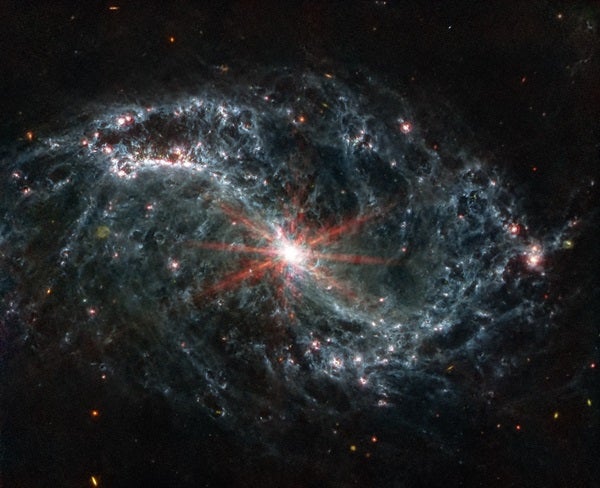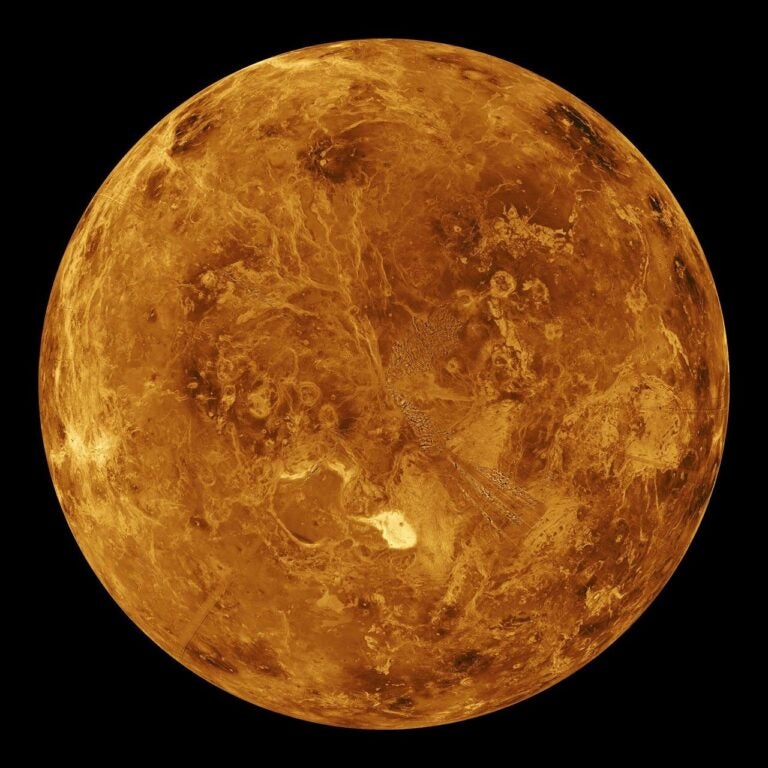NASA’s $10 billion James Webb Space Telescope (JWST) has now been in space for little more than a year — but the stunning results it’s already returned are proving its worth every penny.
For proof, just take a peek at the ghostly image of the spiral galaxy NGC 7496 above, which reveals fine filaments of gas and dust interspersed with gigantic voids carved out by young and energetic stars.
Images like this not only make for perfect desktop backgrounds, they also hold great scientific value. In this case, astronomers used Webb’s impressive resolution and sensitivity to identify 67 new candidate star clusters within NGC 7496, which is located some 24 million light-years away in the constellation Grus the Crane. According to a NASA release, these newly identified clusters could contain some of the youngest stars in the entire galaxy.
NGC 7496 is just one of 19 galaxies recently targeted by JWST as part of the Physics at High Angular resolution in Nearby Galaxies (PHANGS) collaboration. The goal of the PHANGS project, which includes observations of nearby galaxies taken by JWST, ALMA, MUSE, Hubble, and the VLT, is to better understand the role both interstellar gas and star formation play in the overall structure and evolution of galaxies.
JWST’s role in the project is to use its infrared vision to cut through the obscuring gas and dust that often surrounds newly formed stars, which are not typically observable in optical wavelengths. In this case, Webb utilized its Mid-Infrared Instrument (MIRI), which is sensitive to infrared wavelengths ranging from about 5 to 28 microns.
Previous infrared studies of stellar nurseries were largely limited by telescopic resolution, meaning they largely focused on star clusters within our Milky Way, the Magellanic Clouds, and other nearby galaxies in the Local Group. However, JWST’s massive 21-foot (6.5 meter) primary mirror gives it the power it needs to look much deeper into space, revealing sights that would have been impossible to see just a few years ago.
The first results of JWST’s PHANGS observations of NGC 7496 were published Feb. 16 in The Astrophysical Journal Letters.










